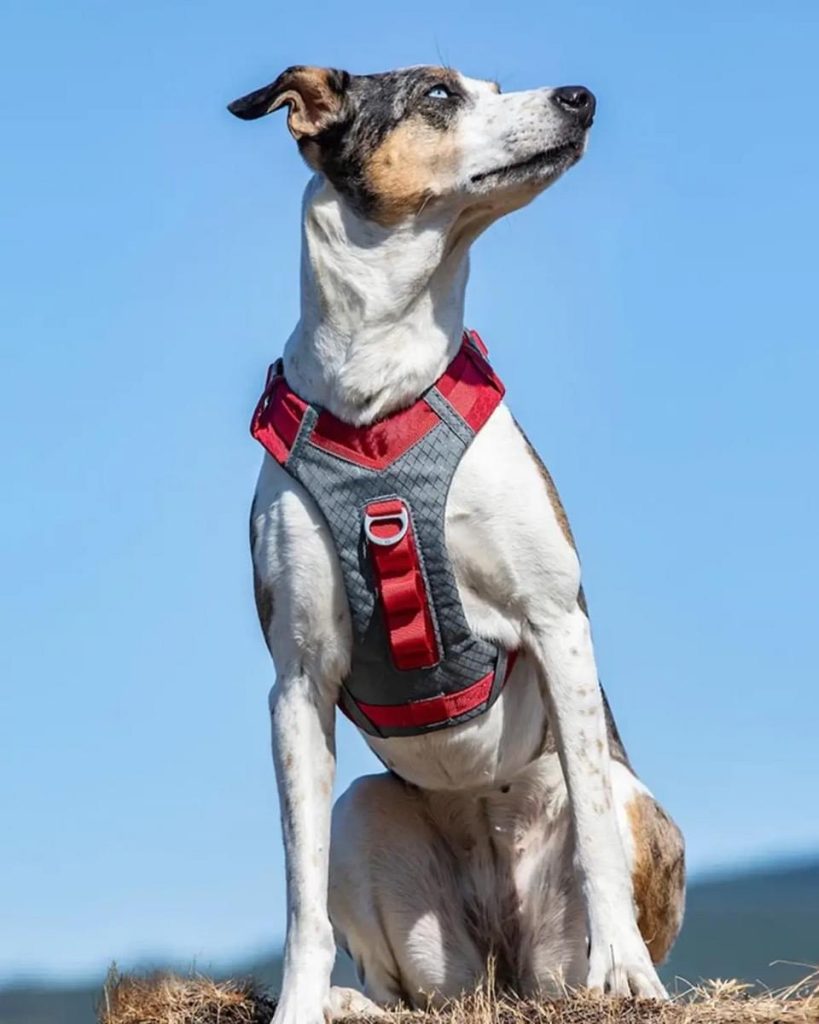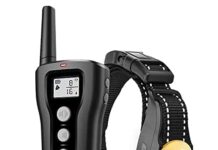Have you ever wondered whether you should choose a collar or a harness for your furry friend? Our article titled “Do Vets Recommend Collars Or Harnesses?” explores this common dilemma that pet owners face.
Find out what the experts say about whether a collar or a harness is better for your beloved companion.
Collars vs. Harnesses
When choosing the right accessory for your furry friend, the debate between collars and harnesses can often leave pet owners feeling overwhelmed. But fear not, as we are here to guide you through the pros and cons of each option, as well as what the experts have to say. So, let’s dive in and explore the world of collars and harnesses together!
Different Types of Collars
Collars come in various styles, each with its purpose and design. Here are some of the most common types of collars:
Flat Buckle Collars
Flat buckle collars are the classic, no-frills option that most pet owners are familiar with. They are easy to put on and remove, making them convenient for daily use. These collars are adjustable to ensure a comfortable fit for your canine companion.
Martingale Collars
Martingale collars are popular for dogs who tend to slip out of their collars or have narrower heads. They consist of a loop that tightens when the dog pulls, preventing them from backing out of the collar. Martingale collars provide a gentle correction without putting excessive pressure on the dog’s neck.
Choke Collars
Choke collars, or slip collars, are designed to tighten when the dog pulls on the leash. However, these collars can be potentially harmful if not used correctly, as they can cause injury to the throat and neck. It’s essential to consult a professional trainer or veterinarian before using a choke collar.
Prong Collars
Often used for training purposes, Prong collars have metal prongs evenly spaced around the collar. When the dog pulls, the prongs apply pressure to the neck, creating a correction. While prong collars may be effective for some dogs, they should only be used under the guidance of a qualified professional.
Head Collars
Head collars, like a horse’s halter, give pet owners more control by gently guiding the dog’s head in the desired direction. These collars can be valuable for managing vital pulling dogs, as they provide more control over their movement.
Harnesses with Front Clips
Harnesses with front clips have a leash attachment point on the front of the dog’s chest rather than the back. This design helps redirect the dog’s pulling force towards the side, making it easier to manage and reducing the likelihood of strain on the neck.
This image is the property of cdn11.bigcommerce.com.
Different Types of Harnesses
Harnesses offer an alternative to collars and can provide additional benefits for both dogs and their owners. Let’s explore some of the different types of harnesses available:
Back-clip Harnesses
Back-clip harnesses have a leash attachment point on the dog’s upper back. They are easy to put on and remove, making them a convenient option for pet owners. However, back-clip harnesses may not provide as much control over pulling behaviors as other types.
Front-clip Harnesses
Front-clip harnesses have a leash attachment point on the front of the dog’s chest. This design helps redirect the dog’s pulling force toward the side and encourages them to face the handler. Front-clip harnesses can be particularly useful for dogs pulling on the leash.
Dual-clip Harnesses
Dual-clip harnesses provide the flexibility of both a front and back leash attachment point, allowing pet owners to choose the best option for their dog’s behavior. These versatile harnesses can provide additional control for dogs who tend to pull.
Head Halter Harnesses
Head halter harnesses have a strap around the dog’s muzzle, similar to a horse’s halter. These harnesses can effectively control pulling and redirect their attention by guiding the dog’s head. However, head halter harnesses may take some time for dogs to become comfortable wearing.
Step-in Harnesses
Step-in harnesses are designed to be easy to put on and take off. With these harnesses, the dog steps into the openings, and the harness wraps around their chest and back. Step-in harnesses are an excellent option for dogs uncomfortable with having their heads manipulated.
No-pull Harnesses
No-pull harnesses are specifically designed to discourage dogs from pulling. They often incorporate features that restrict the dog’s movement or apply gentle pressure when they try to pull. These harnesses can practically teach dogs not to pull on the leash.
Benefits of Collars
Collars have a long history as the go-to accessory for dogs. Here are some of the benefits they offer:
Easy to put on and remove
Collars, particularly buckle collars, are simple to put on and take off, making them a convenient choice for daily walks and outings. The straightforward design allows for quick and hassle-free usage.
Provides clear identification
Collars are commonly used to display identification tags with the dog’s name and contact information. This makes it easier for lost dogs to be returned to their owners promptly, ensuring a swift reunion.
Allows easy attachment of tags and leashes
Collars provide a secure attachment point for tags and leashes. This allows for convenient identification and ensures that the dog is always safely restrained while out and about.
Less bulky and lighter compared to harnesses
Collars are generally compact and lightweight, requiring fewer materials. This makes them less bulky and more comfortable for dogs throughout the day.
It can be worn all day without restricting movement
When fitted properly, collars should not restrict the dog’s movement or inhibit their natural behaviors. This allows dogs to wear their collars comfortably for extended periods, accommodating all their daily activities.
This image is the property of chelford.gumlet.io.
Benefits of Harnesses
Harnesses have gained popularity due to their unique advantages. Here are some of the benefits they offer:
It gives better control over pulling dogs
Harnesses, especially those with front clips, provide better control over dogs who tend to pull on the leash. By redirecting the pulling force towards the side, harnesses make it easier for pet owners to manage their dogs’ behavior.
Protects the neck from injury
Unlike collars, harnesses distribute force evenly across the dog’s body, reducing the risk of neck injuries. This can be particularly beneficial for dogs with pre-existing neck or throat issues.
Distributes force evenly across the body
Harnesses ensure that any pulling force exerted by the dog is spread evenly across their body. This reduces the strain on specific areas, such as the neck, and helps maintain overall body alignment.
It prevents dogs from slipping out
Harnesses provide a secure and snug fit, making it difficult for dogs to slip out of their accessories. This is especially useful for dogs who are escape artists or have a knack for wiggling their way out of collars.
Great for dogs with respiratory problems
Certain breeds or dogs with respiratory conditions may benefit from using a harness instead of a collar. Harnesses can alleviate respiratory distress and minimize discomfort by avoiding pressure on the neck or throat.
Disadvantages of Collars
While collars have their advantages, they also come with some drawbacks. Here are a few disadvantages to consider:
It can cause strain on the neck and throat
Collars that are not appropriately fitted or consistently pulled on can cause strain on the neck and throat. This can lead to discomfort, pain, or potential injuries, especially in dogs with pre-existing neck issues.
Less suitable for dogs prone to tracheal collapse
Certain small breeds, such as Chihuahuas or Yorkshire Terriers, are more susceptible to tracheal collapse. Collars can exacerbate tracheal collapse symptoms, making harnesses a better option for these dogs.
It may not deter pulling behaviors
While collars can help control specific behaviors, such as leash reactivity, they may not be as effective in deterring pulling on the leash. In such cases, an alternative like a front-clip harness may be more suitable.
It can lead to injuries if used improperly
Improper usage of collars, such as attaching leashes to improper points or using excessive force, can lead to injuries. Understanding the correct way to use a collar and seeking professional guidance if needed is crucial.
It is not recommended for dogs with certain medical conditions
Some medical conditions, such as thyroid or spinal issues, can be aggravated using collars. In these cases, it is advisable to consult a veterinarian to determine which alternative, like a harness, might be more appropriate.
This image is the property of chelford.gumlet.io.
Disadvantages of Harnesses
While harnesses offer many benefits, they also have some disadvantages. Here are some drawbacks:
Require more time to put on and adjust
H harnesses often require more time to put on and adjust appropriately than collars. This can be problematic for pet owners with limited time or dogs who are impatient or apprehensive during the harnessing process.
It can cause chafing and rubbing if not fitted properly
Ill-fitted harnesses or materials that rub against the dog’s skin can cause discomfort, chafing, or even skin irritation. It is essential to choose the right size and fit for your dog’s body shape and check for any signs of irritation regularly.
It may encourage pulling on specific designs
While front-clip harnesses discourage pulling, some designs may encourage dogs to pull. It is essential to select a harness specifically designed to deter pulling behaviors.
Can restrict natural movement
Specific harness designs, particularly those with multiple straps or restrictive designs, may limit the dog’s natural movement abilities. This can affect their gait and range of motion, potentially causing discomfort or muscle strain.
Some dogs dislike the feeling of a harness.
Just like humans, dogs have their preferences, and some may dislike the sensation of wearing a harness. Observing your dog’s comfort level and seeking alternative options if necessary is essential.
Considerations for Choosing Collars
When selecting a collar for your furry friend, several factors should be taken into account:
Size and breed of the dog
Different breeds and sizes of dogs require different collar sizes and designs. Choosing a collar that fits your dog comfortably and suits their body type is essential.
Comfort and fit
Ensuring your dog’s comfort is crucial, so pay attention to the materials used and the level of adjustability the collar offers. A too tight or loose collar can lead to discomfort, chafing, or potential injuries.
Training goals and behavior
Consider your training goals when choosing a collar. Some dogs may require specific training methods better suited to collar usage. Seek professional guidance if you are unsure which collar to use for training.
Health conditions and medical history
If your dog has any pre-existing health conditions or a history of neck-related issues, consult a veterinarian before deciding on a collar. They can provide valuable insight into whether a collar is suitable or recommend alternative options.
Veterinary recommendations
Veterinarians are a wealth of knowledge when deciding on the best accessories for your dog. You can receive personalized recommendations based on your dog’s specific needs by consulting with your veterinarian.
This image is the property of i.insider.com.
Considerations for Choosing Harnesses
When it comes to selecting a harness for your furry companion, consider the following factors:
Size and breed of the dog
Choosing the correct harness size is crucial to ensure your dog’s secure and comfortable fit. Different breeds and sizes require different harness designs, so be sure to measure your dog accurately and consult the sizing charts provided by manufacturers.
Comfort and fit
Prioritize your dog’s comfort by selecting a harness with padding, breathable materials, and adjustable straps. A well-fitted harness should allow for a full range of motion while keeping your dog secure and comfortable.
Training goals and behavior
Harnesses can be a valuable tool for training, particularly for dogs with pulling or behavioral issues. Consider the training goals you have for your dog and choose a harness that will support your training efforts effectively.
Health conditions and medical history
If your dog has any pre-existing health conditions or a history of injuries, consult a veterinarian before choosing a harness. They can advise on the best harness type to cater to your dog’s specific needs and ensure their safety.
Veterinary recommendations
Your veterinarian’s expertise and knowledge can help you select the most suitable harness for your dog. They can provide recommendations based on your dog’s circumstances and ensure their well-being.
What Do Vets Say about Collars?
Now that we have explored the various types of collars and their benefits and drawbacks let’s delve into what veterinary professionals have to say about using collars:
Advocacy for harnesses by vets
Many veterinarians advocate for harnesses, mainly for dogs who tend to pull on the leash or have neck or throat issues. Harnesses provide a safer and more comfortable option, reducing the risk of injuries or exacerbating existing conditions.
Indications for Harness Usage
Veterinarians recommend harnesses for dogs with respiratory problems, small breeds prone to tracheal collapse, or those with neck injuries or conditions. Harnesses distribute force more evenly throughout the body, minimizing strain on the neck and throat.
Scenarios where harnesses may not be ideal
There are instances where harnesses may not be the most suitable choice. Dogs who have already been trained to walk nicely on a leash and not pull excessively may continue to use collars without any issues.
Harness selection advice from veterinarians
Veterinarians stress the importance of choosing a well-fitted, high-quality harness that meets your dog’s needs. They advise carefully considering factors such as size, fit, comfort, and training goals when selecting a harness to ensure it is effective and safe for your furry friend.
Specific veterinary recommendations
It is vital to consult with your veterinarian to determine the most suitable option for your dog. They can provide specific recommendations tailored to your dog’s unique circumstances and ensure their safety and well-being.
In conclusion, the choice between collars and harnesses ultimately depends on your dog’s needs, specific circumstances, and guidance from veterinary professionals. By considering factors such as size, fit, comfort, training goals, and health conditions, you can make an informed decision prioritizing your furry friend’s safety, well-being, and overall happiness.
This image is the property of www.rockstarpuppyboutique.com.










![Petrainer Dog Training Collar [100% Waterproof] Petrainer Dog Training Collar](https://mydogtrainingcollar.com/wp-content/uploads/2019/03/Petrainer-Dog-Training-Collar-218x150.jpg)


































